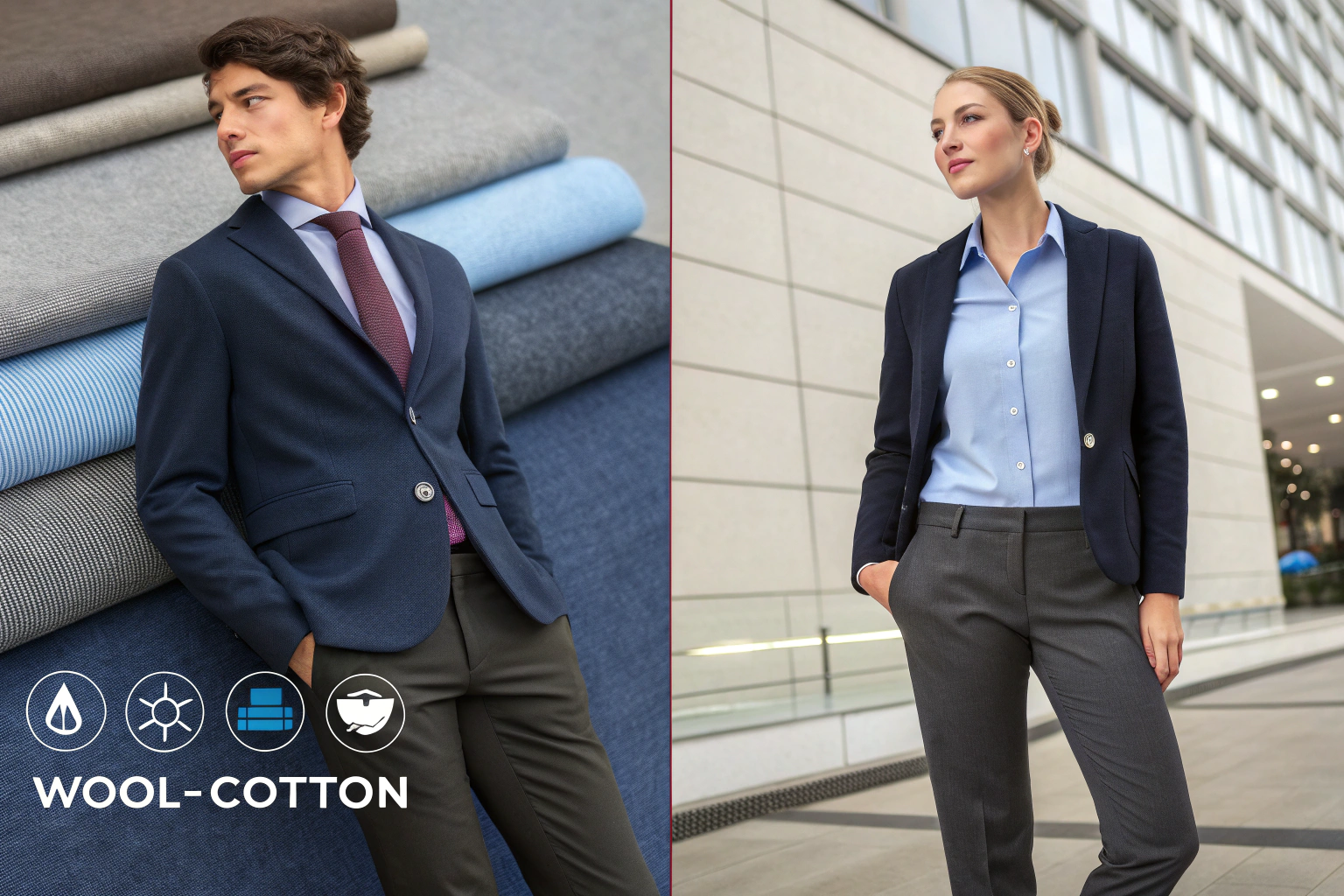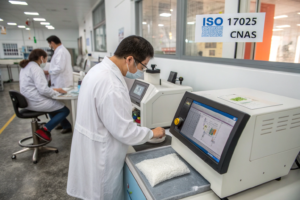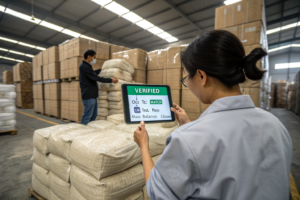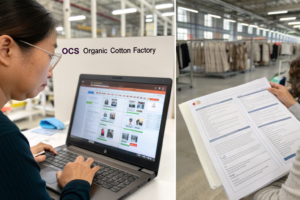Uniforms are worn longer, washed more often, and judged more critically than almost any other garment. Whether for school, hospitality, government, or corporate teams, selecting the right fabric isn’t just about aesthetics—it’s about performance across seasons. And few blends check more boxes than wool-cotton.
Wool-cotton blends offer natural breathability, insulation, wrinkle resistance, and all-day comfort—making them ideal for uniforms worn year-round. These blends combine the structure of wool with the softness of cotton, delivering balance in both hot and cool climates.
As a textile manufacturer in Keqiao, we’ve developed wool-cotton blend fabrics for brands in Europe, Southeast Asia, and the Middle East. In this guide, I’ll explain why this pairing is so versatile, how it outperforms synthetic options, and where to find optimized blends for uniforms.
What Are the Unique Benefits of Wool-Cotton Fabrics?
Blending wool and cotton creates a fabric that merges the best of both natural fibers. While cotton provides breathability and softness, wool contributes warmth, resilience, and odor resistance.
Wool-cotton fabrics maintain core temperature in both summer and winter, making them ideal for multi-season uniforms.

Benefits at a Glance
| Property | Wool-Cotton Blend | Cotton Only | Polyester |
|---|---|---|---|
| Thermal Regulation | Excellent | Moderate | Poor |
| Wrinkle Resistance | Good | Low | High |
| Odor Control | Strong | Weak | Poor |
| Comfort | Soft, adaptive | Soft | Less breathable |
| Appearance | Structured, premium | Casual | Glossy, synthetic |
| Eco Profile | Biodegradable | Biodegradable | Non-biodegradable |
Wool’s natural crimp traps air, providing insulation in winter and cooling airflow in summer. Cotton fibers wick moisture and feel gentle against the skin, preventing itchiness common with pure wool.
Applications
- Corporate uniforms: blazers, trousers, skirts
- School uniforms: tunics, sweaters, cardigans
- Hospitality & airline: waistcoats, dresses, trousers
- Government wear: law enforcement and clerical staff
Our #WC305 series blend (55% wool / 45% cotton) is used by several international school uniform suppliers due to its year-round adaptability and professional hand-feel.
How Do Wool-Cotton Uniforms Perform Across Seasons?
Uniforms are typically worn for extended hours across different environments—indoor offices, outdoor shifts, hot kitchens, or cold classrooms. A fabric that performs year-round must adapt to these changing conditions.
Wool-cotton blends maintain core temperature without trapping heat or becoming clingy, making them superior to synthetics in comfort across seasons.

Summer Performance
- Cotton helps absorb and evaporate sweat
- Wool keeps the fabric dry through vapor absorption
- The blend resists odor buildup in humid conditions
Winter Performance
- Wool fibers trap body heat
- Cotton adds skin-softness for layering comfort
- Maintains insulation even when slightly damp
| Metric | Wool-Cotton | Polyester | 100% Cotton |
|---|---|---|---|
| Cooling in Heat | 4/5 | 2/5 | 5/5 |
| Warmth in Cold | 4.5/5 | 3/5 | 2.5/5 |
| Moisture Management | 4/5 | 2/5 | 3/5 |
We offer yarn-dyed and plain weave blends with finishing options like anti-pilling, nano-stain resistance, and moisture-regulating coatings, ideal for climate-diverse markets.
Why Is Wool-Cotton Better Than Synthetics for Uniform Longevity?
While polyester is often chosen for price and wrinkle resistance, it struggles with breathability and odor retention—two critical issues for uniforms worn 8–12 hours a day.
Wool-cotton uniforms outlast synthetic options by holding shape, resisting odor, and aging with a natural patina—not with shiny wear spots.

Durability Metrics
| Test | Wool-Cotton (WC305) | Polyester (P-TR) | Cotton (C-FD) |
|---|---|---|---|
| Shape Retention (50 washes) | Excellent | Moderate | Low |
| Pilling Resistance | Good | High | Low |
| Odor Control | Excellent | Poor | Moderate |
| Color Retention | Very Good | Excellent | Good |
| Ironing Requirement | Low | Very Low | High |
Wool naturally resists wrinkles due to its spring-like structure, while cotton maintains a smooth drape. When blended, they strike the perfect balance for low-maintenance uniforms.
Our fabric undergoes ISO 6330 washing simulation and is certified under Oeko-Tex Standard 100 for human-safe dyes and fiber treatments.
Where to Source Premium Wool-Cotton Blended Uniform Fabrics?
Finding a wool-cotton blend that meets comfort, budget, and durability needs requires more than browsing fabric books. You need technical specs, finish options, and assurance of supply continuity.
Look for suppliers with in-house testing, finishing expertise, and low-MOQ stock support.
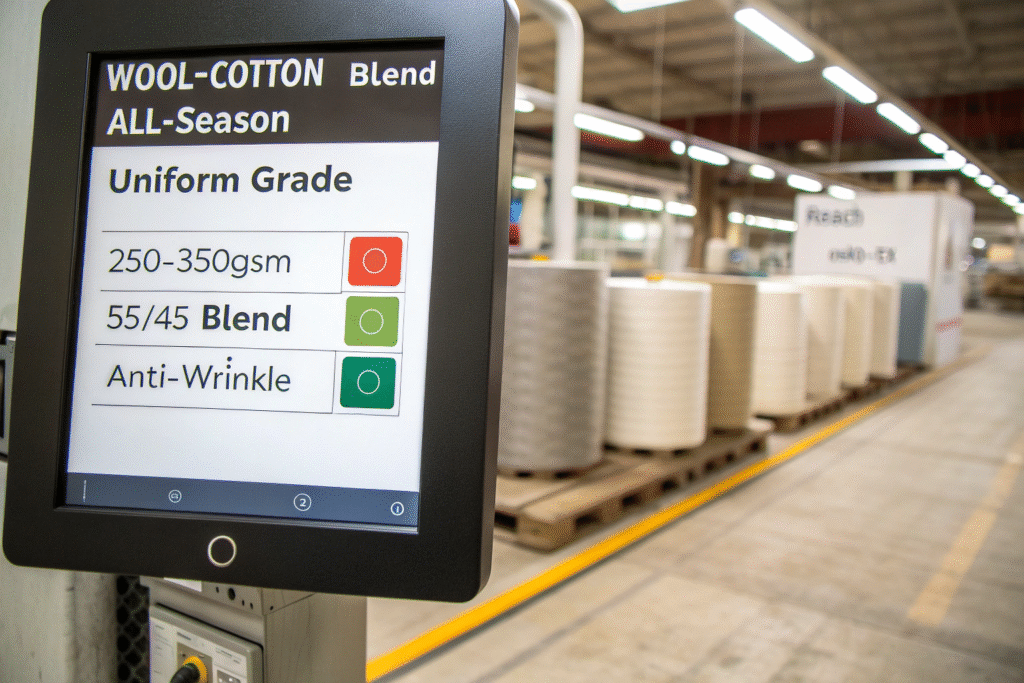
What to Ask Your Supplier
- What is the wool grade and cotton staple length?
- Can you provide shrinkage, abrasion, and pilling test results?
- Do you offer custom color dyeing or yarn-dyed options?
- Is the blend compliant with REACH, OEKO-TEX, or EN ISO 20471 (for hi-vis)?
At Fumao Fabric, we offer:
- Blends ranging from 30/70 to 70/30 wool-cotton
- Both combed and carded yarn types for smooth or textured finishes
- Low MOQ of 300 meters/color, ideal for schools or uniform launches
- Fast sampling and 48-hour lab dips for bulk approval
We also offer digital swatchbooks and video inspections for remote buyers needing full transparency.
Conclusion
Wool-cotton blends represent the perfect harmony of comfort, performance, and versatility in uniform fabrics. They adapt to seasonal shifts, resist odor and wear, and offer the professional polish demanded by today's brands and institutions.
At Fumao Fabric, we manufacture and supply premium wool-cotton blends tailored for uniform use—from education and hospitality to government and corporate needs. With reliable testing, customization, and global delivery, we help your garments perform year-round.
To request tested wool-cotton swatches or begin a customized uniform fabric project, contact our Business Director Elaine at elaine@fumaoclothing.com today. Let’s dress your team in timeless performance.

